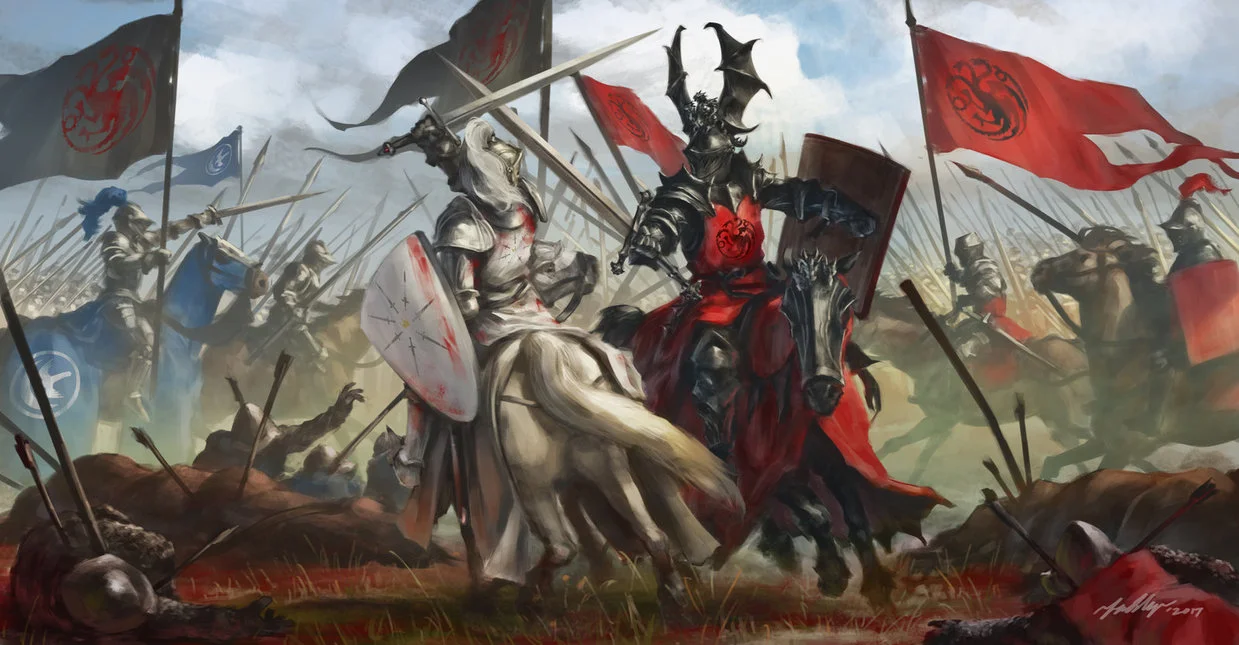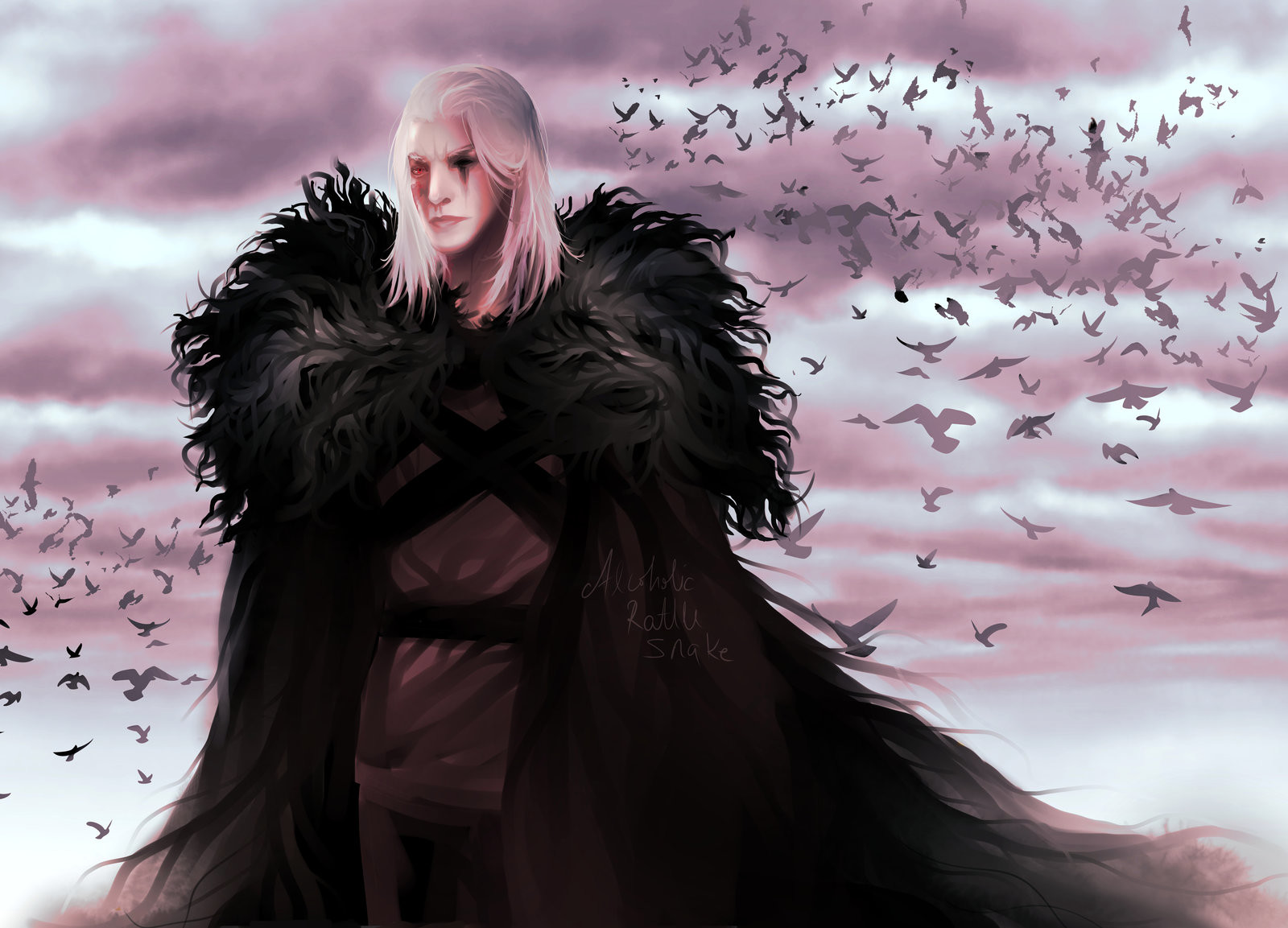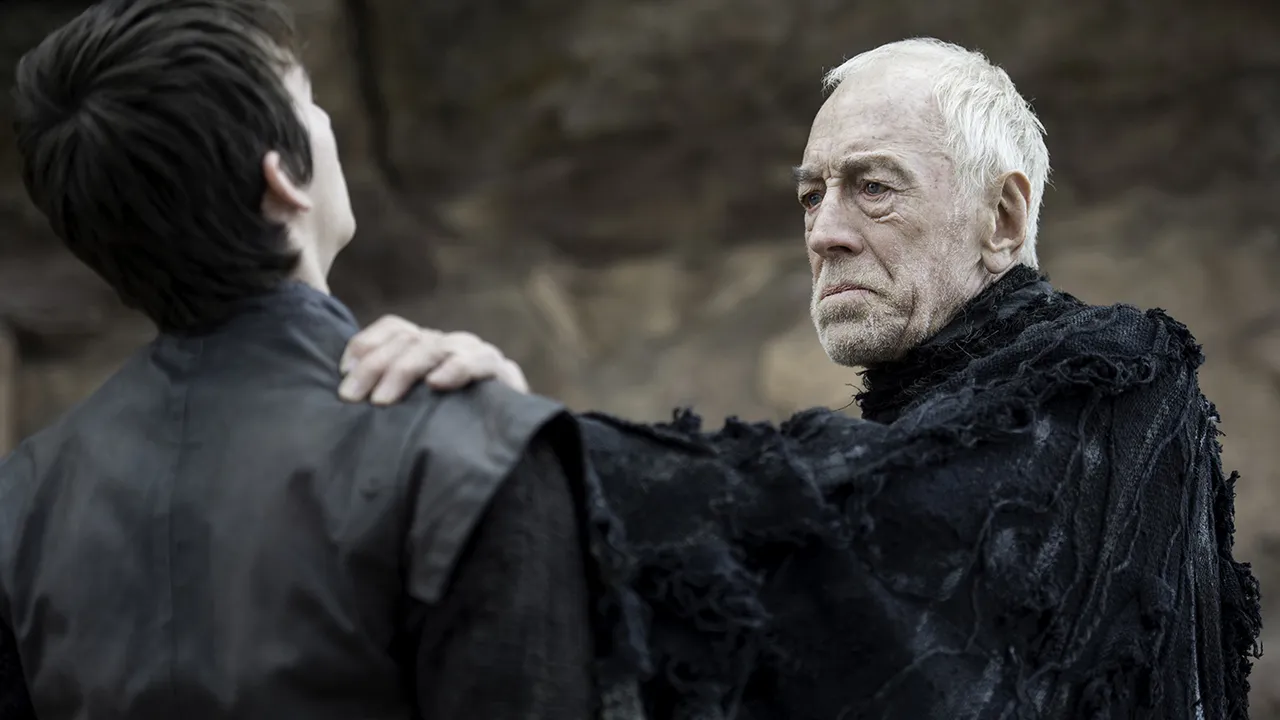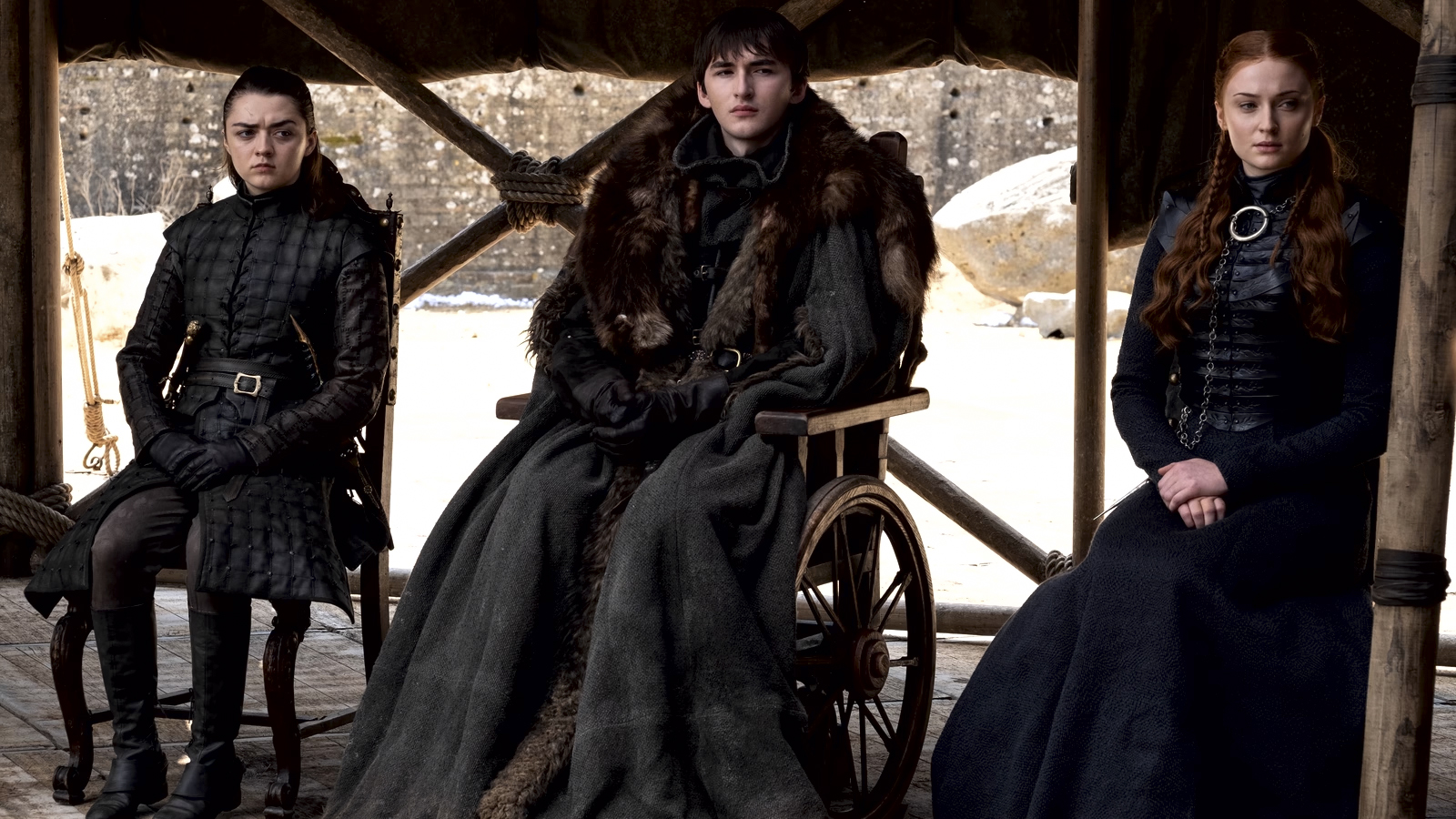Game of Thrones, with its finale, divided the audience. While the majority considers the final episode a major catastrophe, a small minority, such as myself, believes that the ending was as it should have been. The reason for my belief that the ending was as it should have been is hidden in what I will write shortly. When the series chose Bran the Broken as the new king of Westeros, it faced significant criticism. The audience was convinced that Bran was the worst possible choice. But is that really the case? Is Bran not deserving of the throne? Let me ask an even more intriguing question: Are we sure that Bran is the one sitting on the throne?
The Game of Thrones series focuses on a relatively short period in the history of Westeros. However, George R.R. Martin’s rich world actually has a detailed and extensive history. Although we are only briefly visiting a significant but small part of this vast universe with House of the Dragon, there are still many characters in the world that deserve discussion and recognition. One of these characters is Brynden Rivers, also known as Bloodraven. I do not know if we will have the chance to see him in future series, but Brynden is someone who needs to be talked about. He is the main subject of this article.
Let’s get back to our main question: Are we sure that Bran is the one on the throne? To answer this question, we need to take a detailed look at the life of the central character of this article, Brynden Rivers. Westeros harbors numerous dark theories within its vast universe. The most intriguing and equally significant of these theories is related to Brynden Rivers. Now, I will attempt to briefly explain the theory that very few know about and that makes Bran’s ascension to the throne quite logical. But first, let’s go back to the year 184 After Conquest.
![]()
The Blackfyre Rebellion
Aegon IV was arguably the worst king in the history of Westeros. He was remarkably obese, unfit to rule, and utterly devoid of humanity, traits unbecoming of a Targaryen. During his twelve-year reign, Aegon IV indulged in numerous infidelities, and almost every corner of Westeros bore witness to his illegitimate offspring. However, his favorite among these bastards was Daemon Waters. Aegon had even bestowed upon Daemon the Targaryen heirloom sword, Blackfyre, a gesture that prompted Daemon to change his name to Daemon Blackfyre.
The malevolence of Aegon IV did not cease even on his deathbed. In his final decree, he opened the path for all his illegitimate children to stake a claim to the throne. Following his death, the throne passed to his son from his wife, Daeron II Targaryen. However, the lords of Westeros doubted his ability to rule, and some lords, influenced by Daemon Blackfyre, incited him to start a rebellion. This uprising, which would go down in history as the Blackfyre Rebellion and repeat itself five times, saw minor landowners supporting Daemon Blackfyre, while known lords stood behind the king.

Thus, the kingdom’s armies clashed with the rebels on the battlefield. The rebellion also divided Aegon IV’s bastards. Aegor Rivers, also known as Bittersteel, supported Daemon, while Brynden Rivers remained loyal to the king. The primary reason for Bittersteel’s choice to side with the rebels was another bastard sibling, Shiera Seastar. Despite Bittersteel’s deep affection for her, Shiera chose Brynden Rivers over him, sowing discord between the two brothers.
The war between the realm and the rebels concluded with the victory of the king’s forces. Daemon Blackfyre engaged in a one-on-one combat with Gwayne Corbray on the battlefield. Although Daemon emerged victorious, he spared his opponent’s life out of respect for his honorable fight and extended a helping hand. Seizing the opportunity, Brynden Rivers unleashed a volley of arrows upon them. Daemon and Gwayne met their demise on the spot. Witnessing the death of the rebel leader, Bittersteel charged at Brynden in a fit of madness and launched an attack. Bittersteel managed to wound Brynden’s eye before fleeing to Essos with the surviving rebels.
![]()
Hand of the King
Following the war, a widespread plague swept across the entirety of Westeros, leading to the death of Daeron II Targaryen. The throne passed to his son, Aerys I Targaryen. Aerys, who occupied himself with books, had little interest in ruling. Consequently, he appointed Brynden Rivers as the Hand of the King and tasked him with governing the realm in his stead. Brynden served as the Hand for a full twenty years. A significant change occurred in Brynden’s life when Aegon V ascended to the throne following Aerys’s reign as well as Brynden’s tenure as the Hand of the King.
During Brynden’s twenty-year tenure as the Hand, a second Blackfyre rebellion occurred, but the crown ultimately suppressed it. To prevent a third rebellion, the king invited claimants to the throne for discussions. Among those invited was Aenys Blackfyre. Although Brynden had assured the future invitees of safe passage, he failed to keep his word and killed Aenys the moment he arrived in the city. Aegon V did not appreciate Brynden’s decision, which he considered a necessary evil, and subsequently removed him from his post as Hand of the King, sending him to the Night’s Watch.
After taking the black in 233 AC, Brynden demonstrated exceptional leadership at the Wall, eventually becoming its commander six years later. However, the turning point that would alter his and Westeros’s history occurred in 252 AC, after the Targaryen conquest. Brynden Rivers, on a mission beyond the Wall, did not return, and he was never seen again. The last time we saw Brynden, it was thanks to Bran, in a cave where he had become one with the roots of the trees, transformed into a three-eyed crow. How did Brynden reach this state? What led him to become a three-eyed crow? And what significance does his story hold in the broader narrative?

![]()
Magic in Westeros
Brynden Rivers was not a beloved figure among the common folk. His fascination with dark magic and alchemy was constantly discussed among the people. It was rumored that he transforms into an animal at night and roams the streets. With his albino skin and red eyes, he was visually intimidating, and in reality, he was even more terrifying than he appeared. And all the rumors were true.
In the world of Westeros, magic is a hereditary trait. Brynden carried the Targaryens’ blood from his father’s side and the northern Blackwoods from his mother’s side. This meant he possessed both the fire magic known to the Targaryens and the warging abilities of the northerners. Technically, Brynden had the blood of both the Valyrians, known for their magic, and the First Men, who believed in the old gods. His fascination with the old gods was a well-known fact. The bow he used in battle was made from Weirwood trees and bore a striking resemblance to the faces of the gods carved into Weirwood trees.
In the world of Westeros, blood is everything, so we can accept the claims attributed to him as true. Brynden’s ability to perform Valyrian magic, his potential for warging, and the possibility of becoming a Greenseer like Jojen were all within the realm of possibility. So, why are these details important? In the year 252 AC, Brynden, as the commander of the Night’s Watch, disappeared during a mission beyond the Wall. Or perhaps he didn’t disappear; he chose to depart. If Brynden had the ability to see the future or warg abilities, during his time with the Night’s Watch, he might have foreseen the growing threat of the White Walkers in the depths of the North. In response, he might have chosen to leave the Night’s Watch, select a Weirwood tree deep in the North, and merge with it. In doing so, he could have watched over Westeros for a full fifty years, making plans and calculating all possible outcomes, until Bran eventually found him.

![]()
Brynden’s Influence on the Universe
The most significant aspect concerning Brynden Rivers lies here, indeed. For fifty years, Brynden, hidden away in his cave, observed the events in Westeros and saw what was to come. Consequently, he formulated a plan. The central piece of his plan was Bran Stark. Initially, Brynden entered Bran’s dreams as a three-eyed crow and later facilitated Bran’s arrival with the help of Jojen. According to Brynden, Bran was important in the impending battle against the White Walkers. In fact, in the series, we know that Bran wargs into the crows beyond the Wall to monitor events.
However, Brynden’s influence on the universe doesn’t end here. We know that Commander Mormont of the Night’s Watch had a crow that sometimes uttered seemingly meaningless phrases and sometimes repeated words it had heard in conversations. However, when it was time to select a new commander after Mormont in the series, the crow perched on Jon Snow’s shoulder and cried out, “Snow, Snow, Snow,” a pivotal factor in his selection. In the fifth book, the same crow also says “King Snow” while around Jon Snow.
Many readers believe that this crow is controlled by Bloodraven and that he played a significant role in Jon Snow’s destiny. In the series’ sixth season, Brynden shows Bran Jon’s birth and, consequently, who the true heir to the throne is. This reveals that Jon, like Brynden, carries the blood of both Valyria and the First Men. According to Brynden, Jon is Azor Ahai, the chosen one destined to play a vital role in the battle against the White Walkers. But to fulfill this role, he needed to be in the right place at the right time. Therefore, Brynden attempted to guide Jon to where he needed to be, both remotely and with the help of others.

Azor Ahai, the chosen one, is a recurring character in the world of Westeros. Barristan Selmy mentions that Aerys II Targaryen married Rhaella Targaryen after a witch told him Azor Ahai would come from his bloodline. The Targaryens, as emphasized in the House of the Dragon series, are a family that strongly believes in the “chosen one” legend. However, their carefully guarded bloodline is disrupted by Rhaegar and Lyanna Stark. Because Jon begins living with the Stark family as a bastard and his true identity is not revealed to him, he cannot fulfill his role in the universe until he learns who he truly is. Hence, Brynden intervened and tried to convey Jon’s true identity through Bran. And in the series, he succeeds.
The theory gets a bit ambiguous here. When Aegon V attempted to exile Brynden for killing Aenys Blackfyre, Brynden told him that what he had done was a necessary evil. According to the theory, Brynden was trying to preserve the family lineage from which the chosen one would be born. This is why he waged war against Blackfyre and Bittersteel. So, in essence, it was not about politics; it was about the Song of Ice and Fire. From the very beginning of his tenure as the King’s Hand, Brynden had been striving to protect the future.
![]()
A Queen in Essos
Speaking of the Song of Ice and Fire, where does the fire part of this story come into play? Did Brynden ever help Daenerys? We don’t know for sure, at least not in the same way he helped Jon. In fact, Brynden may not have been aware of Dany at all. Dany spends most of the story in Essos, which could be a blind spot for Brynden. The absence of Weirwood trees, different religious beliefs, and the thousands of miles of distance are the main reasons.
However, there is a theory about this as well. In both the series and the books, Daenerys is visited by a mysterious woman named Quaithe. This woman, whose face we cannot see, claims to be a Shadow Binder from Asshai. She then says something to Dany that she can’t quite comprehend:
“To go north, you must journey south. To reach the west, you must go east. To go forward, you must go back. And to touch the light you must pass beneath the shadow.”
Quaithe later meets Dany again and tells her:
“The glass candles are burning. Soon comes the pale mare, and after her the others. Kraken and dark flame, lion and griffin, the sun’s son and the mummer’s dragon. Trust none of them. Remember the Undying. Beware the perfumed seneschal.”
The “Kraken” she refers to could be Victarion or Euron, the “Lion” could be Tyrion, and the others may be individuals who are pursuing Dany with harmful intentions. Somehow, Quaithe seemed to know everyone who was after Dany. An even more intriguing question is why she was helping Dany. Why was she warning her to be the person she was meant to be?
“Remember who you are, Daenerys,” the stars whispered in a woman’s voice. “The dragons know. Do you?”
According to the theory, Quaithe could be Shiera Seastar. While Shiera is mentioned in the book “Fire and Blood,” we don’t know where her story ends. Aegon V says that Shiera bathed in blood to maintain her beauty. George R.R. Martin even suggests that she might be much older than the king and avoided death through her interest in dark magic.
Perhaps Brynden never severed his communication with Shiera. They may still be working together for the universe’s future, just as they did when Brynden was the King’s Hand. It’s important to emphasize here that everything I’ve written to Quaithe can be substantiated and based on existing claims. However, no evidence supports the claim that Quaithe is Shiera. Some even believe that Quaithe might be Elissa Farman. Elissa sailed west with her ship, the Sunchaser, and according to claims, found herself in Asshai in the far east of Essos when she sailed as far west as possible. Knowing that one could reach the west of Westeros by going to the far east of Essos, she might have advised Dany to travel east.
![]()
Who Sits on the Throne?
There is a possibility that Brynden’s influence on the universe is greater than we think. The dire wolves found by the Starks, the boar that killed Robert, Jamie’s Weirwood dream – all of these events may have been orchestrated by Brynden’s guidance. For a full century, Brynden could have been the puppet master behind many of the happenings in Westeros.
So far, the conclusion is that Brynden Stark is the unsung hero of the universe. But is that really the case? According to some theories, Brynden actually brought Bran with him not to save Westeros but to find a new body for himself. Some even claim that Brynden has been serving the White Walkers from the beginning. Melisandre, in one of her visions, encounters Brynden and claims that he is working with an even greater evil.

One thing is certain: Brynden is someone who does terrible things to achieve good results. He killed his brother to end a war, told lies to establish order in Westeros, and organized assassinations to maintain the right bloodline. He manipulated a crippled child and led him into a deadly adventure, even going so far as to erase some of Bran’s memories. Bran undergoes a profound change after meeting Brynden and embarking on time-traveling journeys with him. Meera Reed even remarks on his transformation, saying he has become “someone else.”
Returning to the central question of my article: Who sits on the throne? Evidently, the person sitting on it is not Bran, the child we’ve known since childhood who loved climbing towers. After encountering Brynden, Bran changed and became a new three-eyed raven. Brynden prepared him for the impending final battle by teaching him everything he knew. During this process, Bran evolved into something completely different from the likable child we once knew. However, some theorists claim that Bran has become the new Bloodraven. While Brynden may have saved the universe on the one hand, he may have also achieved his desired throne through Bran. In other words, Brynden could be sitting on the throne through Bran’s body. But this is just a theory because in George R.R. Martin’s universe, with so many possibilities, body-swapping isn’t a readily available option. It’s also worth noting that while much of what we’ve discussed so far is present in the books, our primary reference is the TV series. George R.R. Martin, unable to finish his books for years, let the show forge its own fictional world. Viewers criticized the show and its producers for this reason. However, when we look at the dynamics of the universe, we can’t necessarily say that the show’s ending is entirely illogical.
Sources and Further Information
- R. Martin, George. “A Game of Thrones,” Bantam (2002)
- R. Martin, George. “A Clash of Kings,” Bantam (2002)
- R. Martin, George. “A Storm of Swords,” Bantam (2003)
- R. Martin, George. “A Feast for Crows,” Bantam (2011)
- R. Martin, George. “A Dance with Dragons,” Bantam (2011)
- R. Martin, George. “Fire & Blood,” Bantam (2018)
- A Wiki of Ice and Fire
- Wiki of Westeros
- Alt Shift X, YouTube
- Whycreate, YouTube
